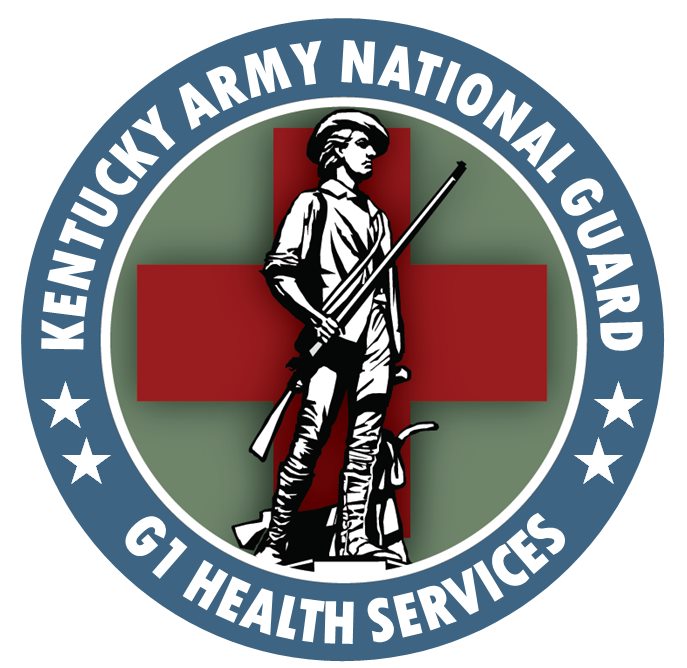Mission
 The Health Services Office reports to the State G1 and is managed by the Deputy State Surgeon. Health Services provides technical expertise and guidance for personnel in health-related programs such as Line of Duty Investigations, Incapacitation Pay, Medical Evaluation Boards, and Non-Duty-Related Physical Evaluation Boards.
The Health Services Office reports to the State G1 and is managed by the Deputy State Surgeon. Health Services provides technical expertise and guidance for personnel in health-related programs such as Line of Duty Investigations, Incapacitation Pay, Medical Evaluation Boards, and Non-Duty-Related Physical Evaluation Boards.
To schedule a PHA (Periodic Health Assessment):
Select from the list below which facility is closest to you. Contact your Readiness NCO and let them know where you would like to go. You will be placed in a duty status for the day. Complete the online portion of the PHA on AKO (found under the My Medical Readiness tab) before you go. Uniform will be APFU, and if you’re going to a TMC rather than an MTF, you’ll need your DA 2813 completed by your dentist, as there will be no dentist at those sites. If you have questions about whether you’re due for a PHA, contact your Readiness NCO.
 Contact Us
Contact Us
Frankfort
Boone National Guard Center TMC
100 Minuteman Parkway
Frankfort, KY 40601
(502) 607-1468
Greenville
Wendell H. Ford Regional Training Center TMC
4675 Hwy 181 S.
Greenville, KY 42345
(502) 607-7978
 Fort Knox
Fort Knox
Ireland Army Health Clinic
289 Ireland Ave
Fort Knox, Kentucky 40121
(502) 624-9333
https://ireland.tricare.mil/About-Us/Remote-Clinics
 Fort Campbell Army Base
Fort Campbell Army Base
Blanchfield Army Community Hospital
650 Joel Drive
Fort Campbell, Kentucky 42223
(270) 798-8400 (Hospital AOD)
 Wright-Patterson Air Force Base
Wright-Patterson Air Force Base
88th Medical Group – Wright-Patterson Air Force Base Medical Center
4881 Sugar Maple Drive
Wright-Patterson AFB, Ohio 45433
(937) 522-2778 or (937) 257-0837
The Importance of Documenting Your Medical Care
It’s Annual Training again, and you’re in the field. You twist your ankle, but the mission comes first, right? So you put off having your attached medics have a look and document your injury, you suck it up, take some ibuprofen, and power through. After a few days the swelling goes down and you feel much better about it. Surely it’ll feel better in a few days.
Fast forward a few months. You felt better toward the end of AT, thanks to more ibuprofen and a pretty good squad leader that gave you some lighter duties, but now your ankle is swelling more often and it’s a lot more painful. You wanted to talk to a medic while at drill, but everyone seemed pretty busy and you didn’t want to get in the way. After all, it’s just a little sprain! Finally, after 7 or 8 months of pain, swelling, and near abuse of ibuprofen, you decide to go see your regular doctor. After an exam, x-rays, and an MRI, you get told you have a broken bone in your ankle that hasn’t healed and requires surgery. You get left with a bill for several thousand dollars, but that’s ok, it happened on duty, right? So you take the bill to your unit, who has no knowledge of your injury, and you get told that since there is no documentation of any sort from a medic at the time of injury and there was no Line of Duty investigation performed within 180 days, that the bill is yours.
This scenario can happen. Documentation of injuries of any sort while on duty is something that will only benefit you throughout your career. You may feel like it’s a waste of time or your injury isn’t severe enough to warrant documentation, but without that documentation, you can and will be left with any resultant bills. Let’s take a look at the process you need to go through should you get hurt while on duty to make sure this doesn’t happen.
The first and most important thing is to make sure you see your medics. Even if it’s as simple as a tick bite or a splinter, having it documented on an SF600 gives proof it happened and was assessed by the medic that filled out the form. This form gets uploaded to your medical record where it can be accessed at any time, and is required for the Line of Duty (LOD) packet.
If this is an injury that you or your medic suspect will require follow-up care after AT, the next step should be for your unit PA to complete a DA 2173, Statement of Medical Examination and Duty Status, and initiate the Line of Duty packet, which is the proof that your injury occurred while on duty. This is required for your state to assume financial responsibility for your treatment.
Another reason for documentation of your medical care while in service can come up once you leave the service. You may decide to file a VA claim for disability at some point in your life. Without having any medical problems documented, you will have a very hard time proving your issues are service connected, which can result in being denied disability claims you are entitled to.
Although it may take a few minutes out of your day, it’s not an inconvenience to anyone to have your injuries and care documented. It’s their job, and your responsibility to follow through and make sure it happens. It can only benefit you in the long run.